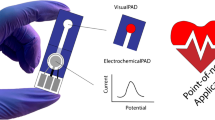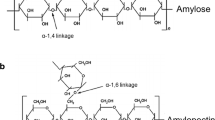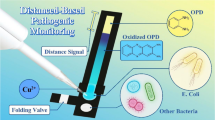Abstract
In contrast to biochemical reactions, which are often carried out under automatic control and maintained overnight, the automation of chemical analysis is usually neglected. Samples are either analyzed in a rudimentary fashion using in situ techniques, or aliquots are withdrawn and stored to facilitate more precise offline measurements, which can result in sampling and storage errors. Therefore, in this study, we implemented automated reaction control, sampling, and analysis. As an example, the activities of xylanases on xylotetraose and soluble xylan were examined using high-performance anion exchange chromatography with pulsed amperometric detection (HPAEC-PAD). The reaction was performed in HPLC vials inside a temperature-controlled Dionex™ AS-AP autosampler. It was started automatically when the autosampler pipetted substrate and enzyme solution into the reaction vial. Afterwards, samples from the reaction vial were injected repeatedly for 60 min onto a CarboPac™ PA100 column for analysis. Due to the rapidity of the reaction, the analytical method and the gradient elution of 200 mM sodium hydroxide solution and 100 mM sodium hydroxide with 500 mM sodium acetate were adapted to allow for an overall separation time of 13 min and a detection limit of 0.35–1.83 mg/L (depending on the xylooligomer). This analytical method was applied to measure the soluble short-chain products (xylose, xylobiose, xylotriose, xylotetraose, xylopentaose, and longer xylooligomers) that arise during enzymatic hydrolysis. Based on that, the activities of three endoxylanases (EX) were determined as 294 U/mg for EX from Aspergillus niger, 1.69 U/mg for EX from Bacillus stearothermophilus, and 0.36 U/mg for EX from Bacillus subtilis.

Xylanase activity assay automation






Similar content being viewed by others
References
Zhao X, Zhang L, Liu D. Biomass recalcitrance. Part I: the chemical compositions and physical structures affecting the enzymatic hydrolysis of lignocellulose. Biofuels Bioprod Biorefin. 2012;6(4):465–82. https://doi.org/10.1002/bbb.1331.
Viell J, Inouye H, Szekely NK, Frielinghaus H, Marks C, Wang Y, et al. Multi-scale processes of beech wood disintegration and pretreatment with 1-ethyl-3-methylimidazolium acetate/water mixtures. Biotechnol Biofuels. 2016;9:7. https://doi.org/10.1186/s13068-015-0422-9.
Yang B, Dai Z, Ding SY, Wyman CE. Enzymatic hydrolysis of cellulosic biomass. Biofuels. 2011;2:421–49. https://doi.org/10.4155/bfs.11.116.
Klein-Marcuschamer D, Oleskowicz-Popiel P, Simmons BA, Blanch HW. The challenge of enzyme cost in the production of lignocellulosic biofuels. Biotechnol Bioeng. 2012;109(4):1083–7. https://doi.org/10.1002/bit.24370.
Diogo JA, Hoffmam ZB, Zanphorlin LM, Cota J, Machado CB, Wolf LD, et al. Development of a chimeric hemicellulase to enhance the xylose production and thermotolerance. Enzym Microb Technol. 2015;69:31–7. https://doi.org/10.1016/j.enzmictec.2014.11.006.
Nomenclature Committee of the International Union of Biochemistry. Units of enzyme activity. Eur J Biochem. 1979;97:319–20. https://doi.org/10.1111/j.1432-1033.1979.tb13116.x.
Lever M. Colorimetric and fluorometric carbohydrate determination with p-hydroxybenzoic acid hydrazide. Biochem Med. 1973;7:274–81. https://doi.org/10.1016/0006-2944(73)90083-5.
Miller GL. Use of dinitrosalicylic acid reagent for determination of reducing sugar. Anal Chem. 1959;31:426–8. https://doi.org/10.1021/ac60147a030.
König J, Grasser R, Pikor H, Vogel K. Determination of xylanase, beta-glucanase, and cellulase activity. Anal Bioanal Chem. 2002;374(1):80–7. https://doi.org/10.1007/s00216-002-1379-7.
Decker SR, Adney WS, Jennings E, Vinzant TB, Himmel ME. Automated filter paper assay for determination of cellulase activity. Appl Biochem Biotechnol. 2003;105-108:689–703. https://doi.org/10.1385/ABAB.
Bailey MJ, Biely P, Poutanen K. Interlaboratory testing of methods for assay of xylanase activity. J Biotechnol. 1992;23(3):257–70. https://doi.org/10.1016/0168-1656(92)90074-J.
Anders N, Schelden M, Simon R, Spiess AC. Automated chromatographic laccase-mediator system activity assay. Anal Bioanal Chem. 2016;409(20):4801–9. https://doi.org/10.1007/s00216-017-0423-6.
Dionex Corporation. Product manual for Dionex CarboPacTM MA1, PA1, PA10 and PA100 columns 031824–08. http://tools.thermofisher.com/content/sfs/manuals/4375-Man-031824-08-CarboPac-Combined-May10.pdf. Accessed 9 May 2017.
He XS, Shyu YT, Nathoo S, Wong SL, Doi RH. Construction and use of a Bacillus subtilis mutant deficient in multiple protease genes for the expression of eukaryotic genes. Ann N Y Acad Sci. 1991;27(646):69–77. https://doi.org/10.1111/j.1749-6632.1991.tb18565.x.
Bähr C, Leuchtle B, Lehmann C, Becker J, Jeude M, Peinemann F, et al. Dialysis shake flask for effective screening in fed-batch mode. Biochem Eng J. 2012;69:182–95. https://doi.org/10.1016/j.bej.2012.08.012.
Bradford MM. A rapid and sensitive method for the quantitation of microgram quantities of protein utilizing the principle of protein-dye binding. Anal Biochem. 1976;72(1–2):248–54. https://doi.org/10.1016/0003-2697(76)90527-3.
Smith PK, Krohn RI, Hermanson GT, Mallia AK, Gartner FH, Provenzano MD, et al. Measurement of protein using bicinchoninic acid. Anal Chem. 1985;150:76–85.
Ghose TK, Bisaria VS. Measurement of hemicellulase activities—part 1: xylanases. Pure Appl Chem. 1987;59(12):1739–52. https://doi.org/10.1351/pac198759020257.
Anders N, Humann H, Langhans B, Spiess AC. Simultaneous determination of acid-soluble biomass-derived compounds using high performance anion exchange chromatography coupled with pulsed amperometric detection. Anal Methods. 2015;7:7866–73. https://doi.org/10.1039/c5ay01371b.
Épshtein N. Structure of chemical compounds, methods of analysis and process control: validation of HPLC techniques. Pharm Chem J. 2004;38:212–28.
Courtin CM, Swennen K, Verjans P, Delcour JA. Heat and pH stability of prebiotic arabinoxylooligosaccharides, xylooligosaccharides and fructooligosaccharides. Food Chem. 2009;112(4):831–7. https://doi.org/10.1016/j.foodchem.2008.06.039.
Oefner PJ, Lanziner AH, Bonn G, Bobleter O. Quantitative studies on furfural and organic-acid formation during hydrothermal, acidic and alkaline-degradation of deuterium-xylose. Monatsh Chem. 1992;123(6–7):547–56. https://doi.org/10.1007/BF00816848.
Baumann MJ, Murphy L, Lei N, Krogh KBRM, Borch K, Westh P. Advantages of isothermal titration calorimetry for xylanase kinetics in comparison to chemical-reducing-end assays. Anal Biochem. 2011;410(1):19–26. https://doi.org/10.1016/j.ab.2010.11.001.
Kumar P, Barrett DM, Delwiche MJ, Stroeve P. Methods for pretreatment of lignocellulosic biomass for efficient hydrolysis and biofuel production. Ind Eng Chem. 2009;48(8):3713–29. https://doi.org/10.1021/ie801542g.
Subramaniyan S, Prema P. Biotechnology of microbial xylanases: enzymology, molecular biology, and application. Crit Rev Biotechnol. 2002;22(1):33–64. https://doi.org/10.1080/07388550290789450.
Acknowledgments
This work was performed as part of the Cluster of Excellence “Tailor-Made Fuels from Biomass,” which is funded by the Excellence Initiative of the German federal and state governments to promote science and research at German universities. The scientific activities of the Bioeconomy Science Center were financially supported by the Ministry of Innovation, Science, and Research within the framework of the NRW Strategieprojekt BioSC (no. 313/323-400-002 13). Specials thanks go to Priya Philip of the Institute for Biochemical Engineering of RWTH Aachen University for supplying the RAMOS fed-batch technique.
Author information
Authors and Affiliations
Corresponding author
Ethics declarations
Conflict of interest
The authors declare that they have no conflict of interest.
Electronic supplementary material
ESM 1
(PDF 382 kb)
Rights and permissions
About this article
Cite this article
Cürten, C., Anders, N., Juchem, N. et al. Fast automated online xylanase activity assay using HPAEC-PAD. Anal Bioanal Chem 410, 57–69 (2018). https://doi.org/10.1007/s00216-017-0712-0
Received:
Revised:
Accepted:
Published:
Issue Date:
DOI: https://doi.org/10.1007/s00216-017-0712-0




